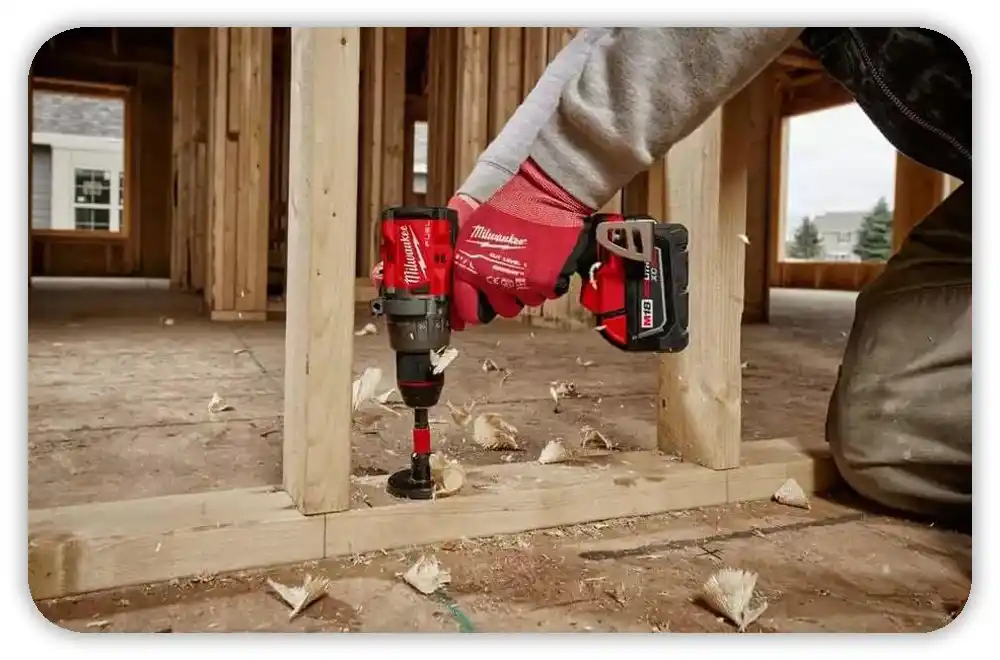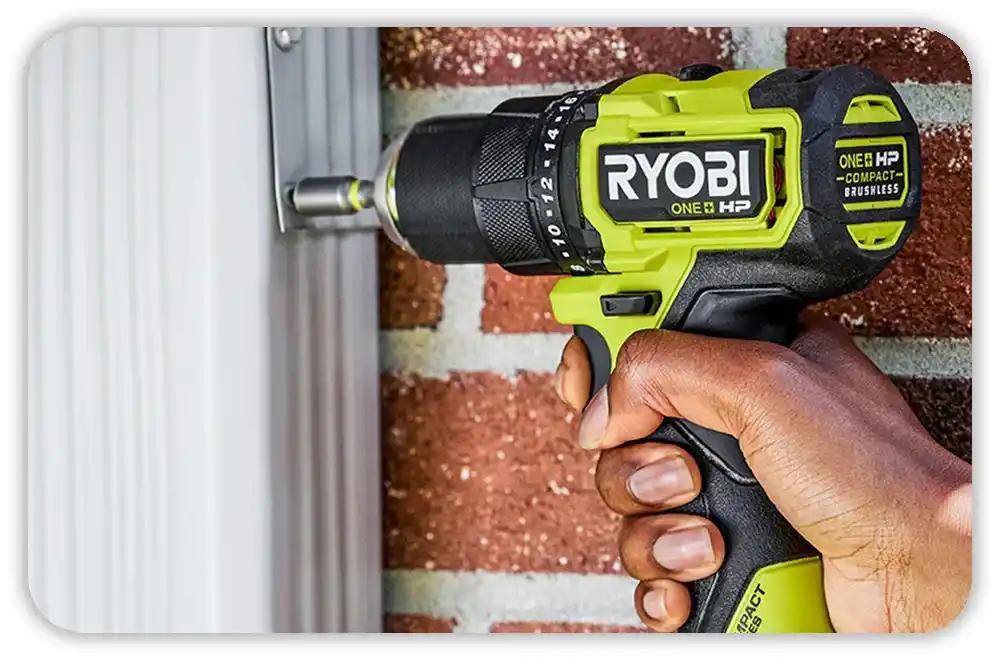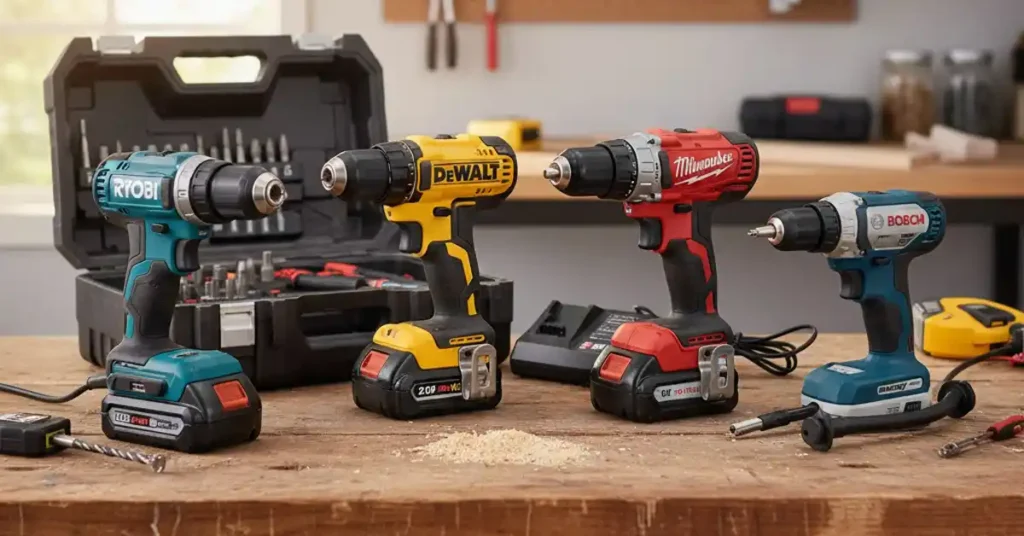A cordless drill sits on a small shelf in my garage. I didn’t plan it that way. It kind of… happened.
Back when I bought my first place, I thought I’d fix a few tiny things and move on. Funny how fast that ends. One shelf leaned, then another screw backed out, and at some point I was crawling under a cabinet wondering why I ever thought a hand screwdriver was enough.
Now I grab the drill without thinking. Sometimes it’s annoyingly loud. Sometimes the battery isn’t where I left it. But it gets me through the weird little problems a house likes to throw at you.
Why a Cordless Drill Matters for Home Use
I used to think cordless drills were for “real” projects—deck building, garage makeovers, stuff I was absolutely not doing. Then one Saturday morning, a shelf in my hallway did this lazy tilt, like it had given up on life. I poked at it with a hand screwdriver for a while. My wrist quit before the shelf did.
I remember standing there thinking, “Alright, fine. I need a drill.” Not a dramatic moment, just one of those small household defeats that pushes you into adulthood.
Key Features to Consider When Buying a Cordless Drill
This is the part I wish someone had told me early on. I learned each thing by messing up a bit.
Voltage (Power Output)
Voltage confused me at first. I walked down the aisle at Lowe’s staring at 12V, 18V, 20V like I was choosing a lottery ticket. No clue what any of it meant. I even asked a guy in the aisle, and he shrugged like he didn’t know either.
After messing with them in real jobs—some I botched, some I lucked through—I found my groove. The 12V models felt tired the moment they hit a stud. The 18V and 20V? Those actually showed up to work.
Motor Type: Brushless vs Brushed
I started with a cheap brushed drill. It heated up fast. The motor felt rough. The battery drained in the middle of a job. One warm day, I caught a faint burnt smell. That was my warning.
When I switched to a brushless drill, the change was huge:
Brushless feels better
- Smooth
- Quiet
- Cool even after long use
- Lasts longer
Brushless drills cost more. But if you use your drill often, it’s worth it. I learned that after drilling a few holes in hardwood. The brushless model stayed steady the whole time.
Torque Settings and Speed
Torque rings should come with warning labels. I learned that when I tried hanging a mirror late one night—probably too late, because I was tired and impatient. I cranked the torque up thinking “more power means faster,” which is not how anything works. The screw shot in so deep it looked like it was trying to hide from me. I just stared at it, like it had betrayed me personally.
Chuck Size and Type
The chuck holds the bit. I didn’t think much about it at first. Then I lost a chuck key for an older drill and had to search for an hour.
Now I only use drill drivers with a keyless chuck.
Chuck sizes I tried
- 1/2 inch for large bits
- 3/8 inch for most home tasks
For home use, 3/8 inch is fine. It keeps the drill light.
Battery Capacity (Ah)
I was halfway through swapping cabinet handles on a lazy afternoon when the drill started making that sad fading sound—like a sigh. Then it died. No warning. I had no spare battery. So the kitchen sat there half-dressed for the rest of the day. Annoying, but also very on-brand for me.
Ergonomics and Weight
After ten minutes of drilling overhead screws in my closet, my arm hurt. That taught me a lesson. If a drill feels heavy, you will avoid using it.
What I look for now
- Good grip
- Balanced weight
- Slim head for tight corners
I often work under sinks or near the back of cabinets. A compact drill helps a lot.
Helpful Extra Features
Some small extras helped me more than I expected:
- LED light for dark corners
- Fast charger for winter mornings
- Belt clip for ladder work
- Storage case to keep bits in one place
Nothing fancy. Just things that made real tasks easier.
Why I Use a Cordless Drill for Most Home Tasks
This tool became my go-to for many small jobs. It feels simple but does a lot.
Mobility and Freedom
The first time I used my cordless drill outside, I was on a ladder on my porch. No outlet nearby. No cord wrapped around my leg. The freedom felt great.
I use mine under sinks, in tight closets, and on my deck. No cords means fewer small annoyances.
One Tool for Many Home Projects
I used my drill for shelves, hinges, desks, metal brackets, and even paint mixing once. With a few bits, you can switch tasks fast.
A cordless drill feels like a small toolbox in one hand.
Modern Batteries and Motors Make Life Easy
Older drills felt heavy and loud. My father had one in the garage. It ran like a tractor and died fast in cold weather.
New lithium-ion batteries last longer. Brushless motors run smooth. On a cold January morning, my drill started fine even though the garage felt like a freezer.
The Right Power Range for U.S. Homes
Most U.S. homes have drywall, studs, and light woodwork. An 18V or 20V cordless drill works well for all that. Strong enough. Still light. Easy to find parts and batteries.
My Top Picks: Best Cordless Drills for Home Use
Here are the cordless drills I used, tested, or borrowed during real home projects.
Milwaukee 2904-20 Hammer Drill
I tried this on a cold Saturday in my garage. It felt like a compact tank. Strong and steady.

What I liked
- High torque
- Great hammer mode for brick
- Compact build
- Cool brushless motor
What felt off
- High price
- Too strong for small jobs
Good if you want one drill that can do almost anything.
Ryobi 18V One+ Compact Drill
My neighbor handed me this one on a warm afternoon. It felt light and simple.

What I liked
- Good price
- Easy to use
- Large battery line
- Light weight
What felt off
- Less torque
- Some models use brushed motors
Great for daily DIY and small home repairs.
DeWalt DCD796
I used this on a quiet Monday night while fixing a hinge in my kitchen. It felt balanced.

What I liked
- Brushless motor
- Strong hammer mode
- Comfortable grip
- Batteries easy to find across U.S. stores
What felt off
- Price can rise depending on the kit
- Not ultra-light
Solid all-round drill driver.
Skil PWRCore Drill Driver Kit
This was my first drill after moving into my home. I tested it on a scrap board on my kitchen counter at night. It felt friendly and easy.
What I liked
- Good budget pick
- Comes with battery and charger
- Light feel
- Easy for beginners
What felt off
- Not ideal for heavy-duty work
Great for new homeowners.
Bosch 18–20V Drill
I used this Bosch on a warm Sunday while fixing a loose board on my deck. Smooth and quiet.
What I liked
- Great grip
- Brushless motor
- Nice control
- Reliable build
What felt off
- Less torque than high-end drills
- Costs more than entry-level tools
A dependable drill for everyday home tasks.
Comparison Table: Best Cordless Drills for Home Use
| Model | Voltage | Motor Type | Key Features | Best For | Price |
| Milwaukee 2904-20 | 18V | Brushless | Hammer mode, high torque | Heavy tasks + home | $195 |
| Ryobi 18V One+ Compact | 18V | Brushed/Brushless | Light, simple, budget | Everyday DIY | $136 |
| DeWalt DCD796 | 18V/20V | Brushless | Strong hammer mode | Home + light pro | $149 |
| Skil PWRCore Kit | 20V | Brushless | Battery + charger included | Light tasks | $149 |
| Bosch 18–20V | 18V | Brushless | Smooth control | Daily use | $197 |
How I Use and Maintain My Cordless Drill
These habits came from trial and error. Some errors bigger than I want to admit.
Use the Right Bits
One day in my garage, I used a wrong bit on wood. It squeaked. Burned the surface a little. Not fun.
Now I keep wood, metal, and masonry bits in a small box.
Drill Pilot Holes
I learned this one fast. I rushed a coat hook job one cold night. No pilot hole. The wood split.
Now I make small pilot holes for clean work.
Set the Clutch Before You Start
Once I drove a screw too deep into a drawer front. It looked bad. Now I set the clutch low for soft wood and only raise it when needed.
Take Care of the Batteries
I left my battery in the garage on a winter night. It slowed the next day. Now I store them indoors.
Lithium-ion batteries last longer when kept warm.
Keep the Drill Clean
Dust gathers fast around vents. I wipe mine after big tasks. It helps airflow and keeps the drill healthy.
Pull the Bit Out While Drilling
When I drill deep holes, I pull the bit out every few seconds. It keeps the bit cool. It clears dust. And it helps the drill work less.
Which Cordless Drill Should You Choose?
After trying all these drills during real home tasks, here’s what worked best for me:
- Best power: Milwaukee 2904-20
- Best value: Ryobi 18V One+
- Best all-rounder: DeWalt DCD796
- Best budget: Skil PWRCore
- Best balance: Bosch 18–20V
For most home needs, an 18V to 20V brushless drill with at least a 2Ah battery feels right. Strong. Light. Easy to use.
FAQs: Best Cordless Drills for Home Use
What voltage is best for a cordless drill for home use?
An 18V or 20V cordless drill gives enough power for most home tasks. It works well on wood, drywall, and studs. It stays light and easy to hold.
Is a brushless cordless drill better for DIY work?
Yes. A brushless cordless drill runs smooth and stays cool. It lasts longer and feels steady during home DIY tasks. It also helps save battery life.
How long does a cordless drill battery last?
Most 2Ah to 4Ah batteries last through small home jobs. Run time changes with speed and torque. A spare battery keeps work moving.
Do I need a hammer drill for home use?
A hammer drill helps on brick or masonry. For wood and drywall, a standard cordless drill works fine. Pick a hammer mode only if you plan tough tasks.
What features matter most in a cordless drill?
Look for a good grip, simple torque settings, strong battery life, and a keyless chuck. These help with quick and easy home use.

